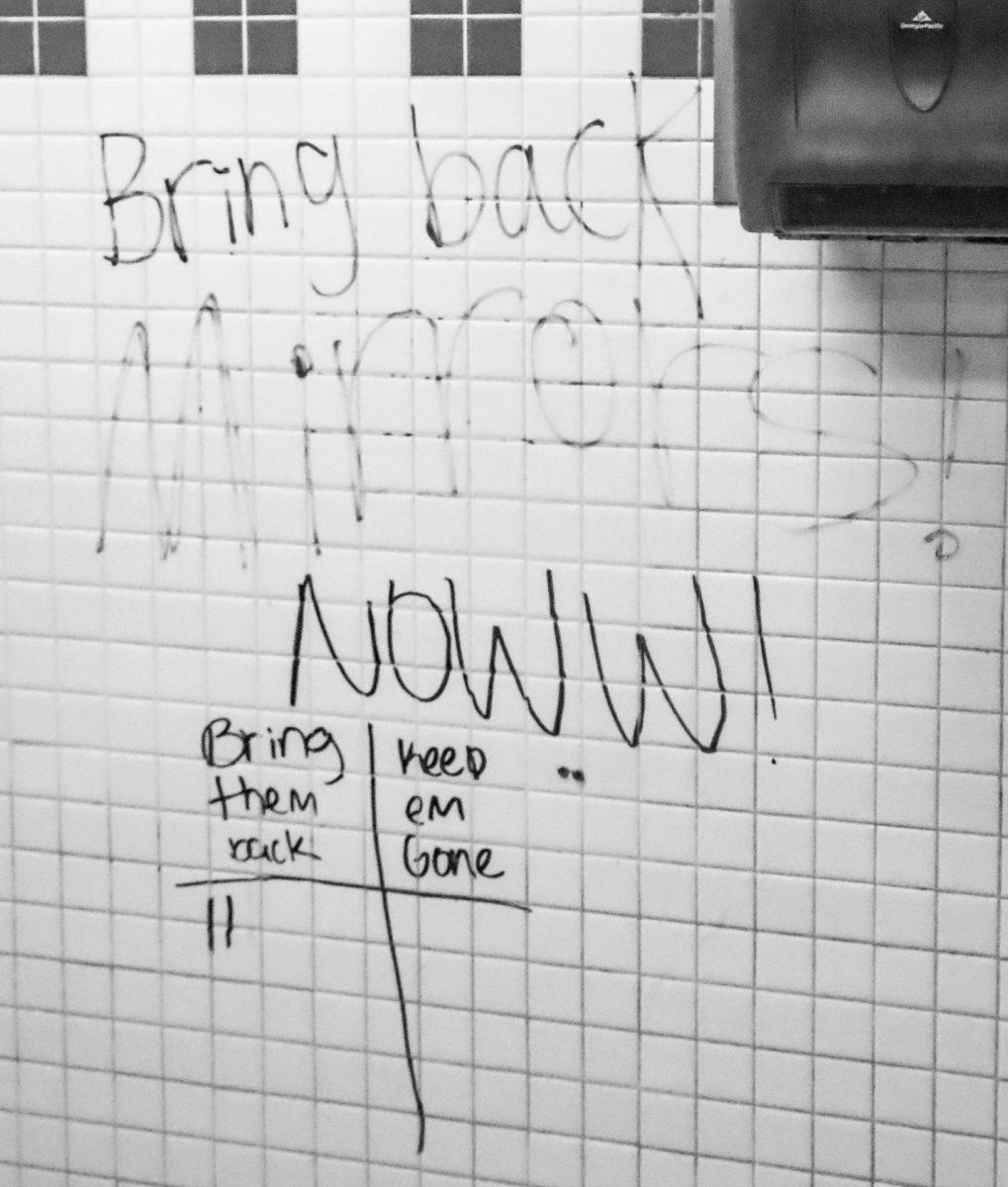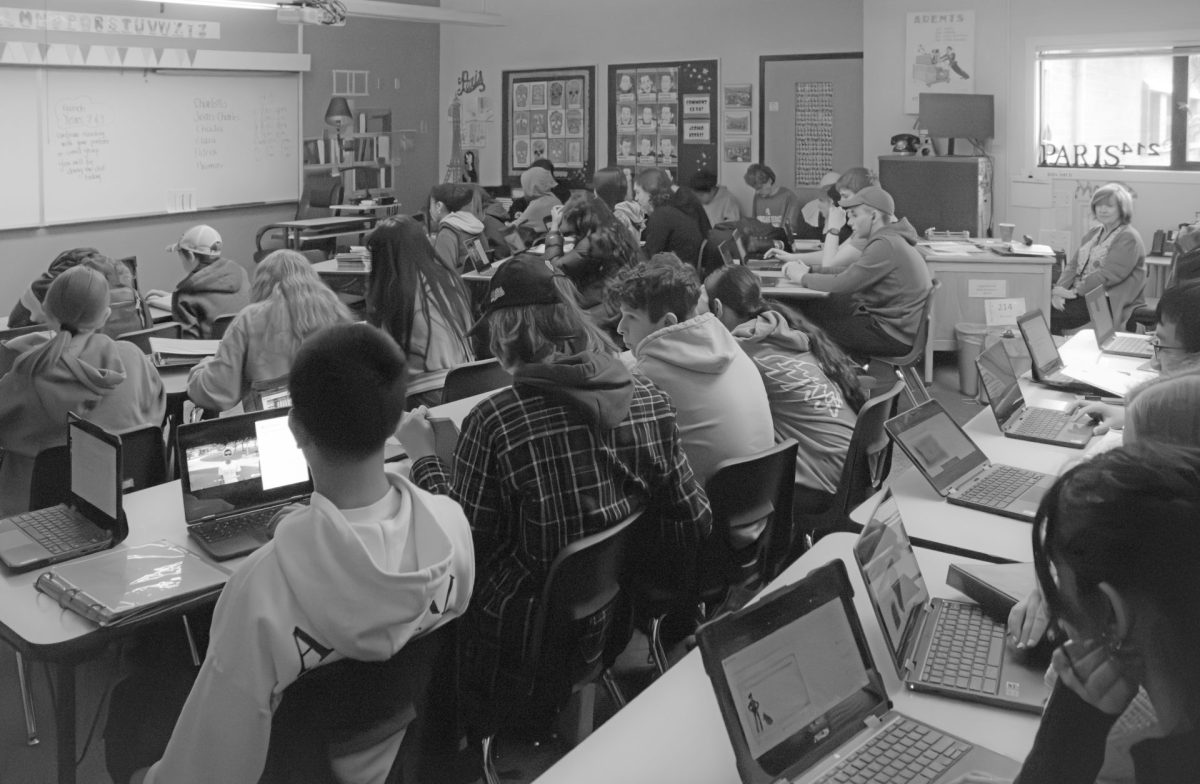While walking through the halls of MTHS during the school day, you’re sure to see a great deal of diversity among the students who strut, stroll and wander from class to class. But walk into an MTHS staff meeting and you surely won’t see anywhere close to that same diversity.
According to the Office of the Superintendent of Public Instruction (OSPI) in 2013, 44 percent of the students at MTHS were students of color. That diversity certainly is not reflected in the faculty. Just a handful of the 54 teachers at Terrace are people of color.
The lack of teachers of color at Terrace is representative of the situation nationally. According to a study from the Center for American Progress, “students of color made up more than 40 percent of the school-age population. In contrast, teachers of color were only 17 percent of the teaching force.”
What’s also clear is that the rates of teachers of color are barely increasing over time. According to the National Center for Education Statistics, the percentage of public school teachers of color rose by just over one percent from 2003 to 2011.
With such disproportionate racial representations in classrooms between students and teachers, many individuals and groups are calling for more people of color leading America’s classrooms. What will it take to close the gap? And why is a greater amount of diversity among teachers so essential?
The case for more educators of color
After growing up, business technology teacher and head basketball coach Nalin Sood realized that as a student of color himself, having a teacher of color was beneficial because it showed him that people of all colors can achieve success.
“Being one of the few minority kids in my kindergarten class…maybe I didn’t realize it then but I look back and having a minority teacher at the time was a good thing and showed me that…whatever color you are, whatever race you are, you make your own mark,” Sood said.
It’s important for students of color to have a visual representation in the classroom, behavior coordinator Michael Boxley and Black Student Union (BSU) adviser said. Boxley is the only person of color on the administrative team.
“It’s vital for students of color to see people [of color] in positions of power, people in positions that you can someday fill because then that makes it a realistic option for [students of color],” he said.
Studies have shown that diversity in the classroom is beneficial to the learning process, especially for students of color. According to American Sociological Association’s research on the impact of racial diversity, “Black students are significantly more likely to discuss minority groups, bring up personal experiences with course topics, discuss anger or other emotions, and make connections to social theory or theorists.”
For students of color, racial diversity among the school staff can bring a sense of trust and comfort. Boxley said he has found this experience to be true at MTHS.
“It’s kind of a trust thing as well, some students because of their experience in race they are kind of jaded and they don’t trust people of other races,” he said.
Advocates of more diversity amongst teachers say students of color feel more comfortable sharing openly with teachers of color. Additionally, individuals calling for more teachers of colors in schools point to the learning opportunities afforded by diversity.
Student of color and BSU member sophomore Grace Naucukidi said she would like to see more teachers from different backgrounds at MTHS.
“I feel like it would be more comfortable for students that don’t feel the same as other students or feel open toward teachers…it would be a lot better for them educationally to open up in school and it would open up opportunities for them to really get out there and step out of their comfort zone,” Naucukidi said.
Sophomore Amaree Green said Boxley understands challenges unique to students of color, such as family issues.
Green is also a student of color and a BSU member.
“He’s our role model,” Green added about Boxley.
Naucukidi also expressed the comfort she has with being able to have a teacher of color as a role model.
“I know Boxley has helped a lot of us like in BSU…and he’s definitely portrayed a lot of it through his actions and dealing with us,” she said.
Science teacher Jonathan Tong said diversity in a variety of measures makes for better learning at school.
“Every student really does come from a different experience and background and it’s really not just racial minority…there are students of different religious backgrounds, different sexual orientations, different economic backgrounds,” Tong noted. “Just growing up in different cultures or subcultures is different and I recognize that it’s important so, having teachers that students can identify as something outside of the normal white middle class range I think is important and valuable.”
Growing a more diverse teaching staff
With many recognizing the need for more people of color as educators, the question becomes: how does MTHS achieve this goal?
Principal Greg Schwab said the issue is in part, “because this is a community that for whatever reason we’re just not attracting applicants.”
Schwab suggested the low rates of teachers of color currently employed in the Edmonds School District unfortunately deter potential applicants of color from applying.
“If you’re a minority applicant and you look at coming to Edmonds, which is a pretty white place for the most part, and the district even as hard as they tried to make hiring minority a priority… if you’re a minority candidate and you look at Seattle and even Everett and then you look at Edmonds, I think you’re probably going to be more attracted to a district that has more people who are like you.”
Despite this challenge, Schwab said hiring more teachers of color is essential.
“I absolutely agree that we need to make it a priority to hire more qualified minority candidates,” he said.
Tong said he believes that MTHS needs a more diverse staff, but only if applicants are chosen on the basis of their knowledge and not because of them being a minority.
“I don’t think it’s a good idea to hire teachers just on the basis of their skin color. I think if you got two candidates where everything is equal but you got one person who represents a racial minority… then I’d say yeah.”
Teachers of color face unique challenges both in the application process and in the classroom. For math teacher Stephanie Lee-Henning, the job searching process included asking herself how much her race was a factor in her hiring decision.
“At one of my first interviews, they made some comment about how I’d be good for the numbers of the district. I’ve always kind of questioned did I get hired because I was the best candidate or the color of my skin?” she said.
Being one of the handful teachers of color can also bring upon pressure in the sense of first impressions and wanting to set a good example.
Broadcast and photography teacher Angelo Comeaux said that as a teacher of color, he has felt these personal pressures.
“It’s about getting the job done and teaching the students. I know in the back of my mind I’m one of the few black adults they might encounter so, that’s a big responsibility to not damage their impression,” Comeaux said.
But despite these challenges, Boxley said it’s critical for people of color to seek employment in schools such as MTHS.
“I think that also falls on people of color. I think that we have to take that as a responsibility to go out and fill those positions, not for them to put us in those positions,” Boxley said.
“I think that we have to take on a responsibility to go out and take things and that doesn’t mean taking and stealing, that means going out and taking positions of power, taking positions that allow us to make change for future generations,” he said.





